|
|
Post by zarahan on Apr 11, 2016 2:31:32 GMT -5
Originally posted by al-Takuri:  Takuri where is your reference map and info from? Very interesting. |
|
|
|
Post by Tukuler al~Takruri on Apr 11, 2016 3:58:52 GMT -5
I think I gave map reference in the ES
Following Fertile Landscapes thread.
The captioning is just my recollection.
Feel free to critique!
Oh, I added the scale as an aid because
a poster was questioning dates, which
are in C14 reckoning, that is different
than the CE BCE way we usually use.
|
|
|
|
Post by samuel on Apr 14, 2016 16:37:41 GMT -5
Honestly I don't even know why they classified Egyptian as Afro asiatic? It has more in common with Niger Congo.
|
|
|
|
Post by anansi on Apr 14, 2016 18:05:12 GMT -5
Honestly I don't even know why they classified Egyptian as Afro asiatic? It has more in common with Niger Congo. Because the earlier linguist recognized the spread of an African language family from east Africa into nearby Asia and the Levant and crossed back and forth between regions. Chis Eret proposed the language phylum be named Afrasian with emphasis on the African. |
|
|
|
Post by melanitex on Apr 18, 2016 5:09:52 GMT -5
Honestly I don't even know why they classified Egyptian as Afro asiatic? It has more in common with Niger Congo. Since were on the topic of language I've always wondered something, if Ancient Egypt was a product of the south then why did the Ancient Egyptian writing system not come out of Sub-Sahara Africa? like why can't we find a Proto-Egyptian Hieroglyphic system in Nubia or even lower South in the Great Lakes region or so? |
|
|
|
Post by anansi on Apr 18, 2016 8:06:19 GMT -5
Honestly I don't even know why they classified Egyptian as Afro asiatic? It has more in common with Niger Congo. Since were on the topic of language I've always wondered something, if Ancient Egypt was a product of the south then why did the Ancient Egyptian writing system not come out of Sub-Sahara Africa? like why can't we find a Proto-Egyptian Hieroglyphic system in Nubia or even lower South in the Great Lakes region or so? Look up the Thinite dynasties or Ta-Seti Go here xoomer.virgilio.it/francescoraf/hesyra/dynasty00.htmThese early states and proto states were in southern Egypt and northern Sudan aka "Egyptian and Sudanese Nubia" today complete with their proto writing. As was explained before all the royal paraphernalia of a later Kmt had it's origins among the Ta-Seti state aka Nubia. |
|
|
|
Post by melanitex on Apr 19, 2016 2:27:56 GMT -5
Since were on the topic of language I've always wondered something, if Ancient Egypt was a product of the south then why did the Ancient Egyptian writing system not come out of Sub-Sahara Africa? like why can't we find a Proto-Egyptian Hieroglyphic system in Nubia or even lower South in the Great Lakes region or so? Look up the Thinite dynasties or Ta-Seti Go here xoomer.virgilio.it/francescoraf/hesyra/dynasty00.htmThese early states and proto states were in southern Egypt and northern Sudan aka "Egyptian and Sudanese Nubia" today complete with their proto writing. As was explained before all the royal paraphernalia of a later Kmt had it's origins among the Ta-Seti state aka Nubia. Thank You so much Anansi (Will read this and construct a reply as soon as I wake up it's bed time now lol) Samuel I remember reading that the Beja peoples languages were said supposedly to be closet to Ancient Egyptian have you read such a thing? If so what's your take on that? I know for a fact the Beja speak an Afro Asiatic tongue and not a Niger Congo tongue. Another point to remember is the Nubian/Sudanese peoples speak a language classified under the Nilo-Sharan category completely different to Afro Asiatic or Niger Congo wouldn't that separate them from the Afro Asiatic speaking peoples of East Africa and Ancient Egypt? |
|
|
|
Post by zarahan on Apr 22, 2016 22:14:34 GMT -5
Anansi says: Look up the Thinite dynasties or Ta-Seti
Go here
xoomer.virgilio.it/francescoraf/hesyra/dynasty00.htm
These early states and proto states were in southern Egypt and northern Sudan aka "Egyptian and Sudanese Nubia" today complete with their proto writing. As was explained before all the royal paraphernalia of a later Kmt had it's origins among the Ta-Seti state aka Nubia.Indeed. Great link- never seen that particular source page before. Following up your info, the foundational population that created these proto-writing systems were from sub-Saharan Africa. Matter of fact, some of the iconography that comes into the hieroglyphic system as symbols is from the Sudan, and also the Sahara, part of which goes thru the Sudan as well. The southern movement of the desert makes cultures that once lived below the Sahara become "NON- sub-Saharan."  "Saharan and Sudanese rock art from this time resembles early Egyptian "Saharan and Sudanese rock art from this time resembles early Egyptian
iconography. Strong connections between Nubian (Sudanese) and Egyptian material
culture continue in later Neolithic Badarian culture of Upper Egypt.." -- The Oxford encyclopedia of ancient Egypt, Vol 3. Oxford Univ Press. p. 28 "It [hieroglyphs] undoubtedly originated as picture writing, in which an
image represented an object of some sort.. This stage in the development of
writing is not preserved except in prehistoric rock drawings of flora and fauna.
The earliest examples of Hieroglyphic script, labels from Tomb U-j at Abydos
(c 3200 BC) already show its three essential components: ideograms, phonograms
and determinatives." --A Companion to Ancient Egypt. Alan Lloyd ed. p 655 "Populations and cultures now found south of the desert roamed far to the north.
The culture of Upper Egypt, which became dynastic Egyptian civilization, could fairly
be called a Sudanese transplant." --J. Vogel (1997) Egypt and Sub-Saharan Africa: Their Interaction. Encyclopedia of Precolonial Africa. pp. 465-472  |
|
|
|
Post by melanitex on Jul 11, 2016 11:14:10 GMT -5
Can anyone give an explanation on why the Ancient Libyans were depicted as White skinned with beards by the Egyptians on their walls wouldn't that be proof that non blacks were heavily present in North Africa (even if it was just westward of them) in Ancient Times?
|
|
|
|
Post by anansi on Jul 12, 2016 1:02:19 GMT -5
Can anyone give an explanation on why the Ancient Libyans were depicted as White skinned with beards by the Egyptians on their walls wouldn't that be proof that non blacks were heavily present in North Africa (even if it was just westward of them) in Ancient Times? While "some" of the ancient Libyans appeared to be lighter in complexion,i'd be careful of using the term "white" and pls keep in mind that a lot of images that you saw are repos, some made the Libyans whiter than how the Kemetians painted them, even good repos does this. see here. 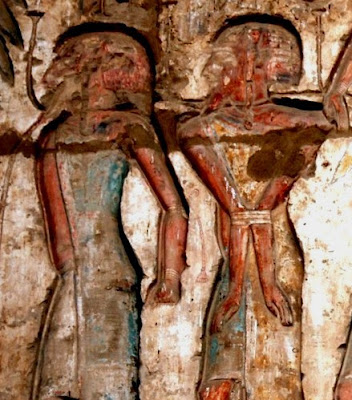 Ancient Libyans according to Kemetian image makers  This is what the non repos looked like. 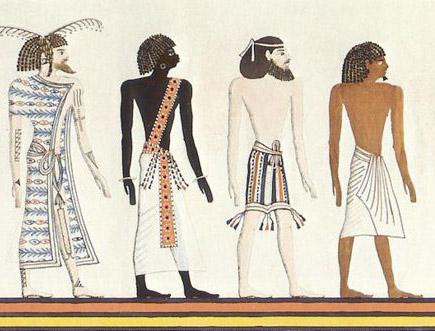 This one by Lipsus Canon came out significantly liter and a terrible drawing.  This one while significantly better, did not actually captured the Libyans as presented by the Kemetians, comparisons is often made by some folks to be alike the Fulani 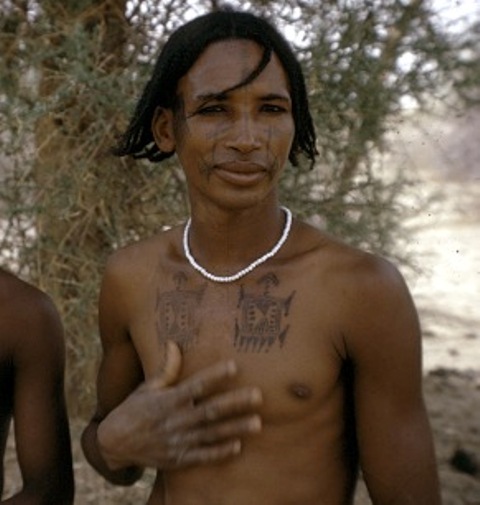  Note the similarity of dress and hair style even body tattoos 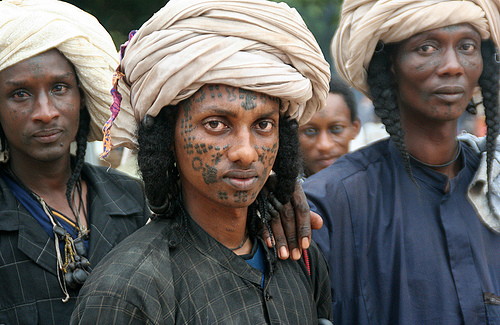 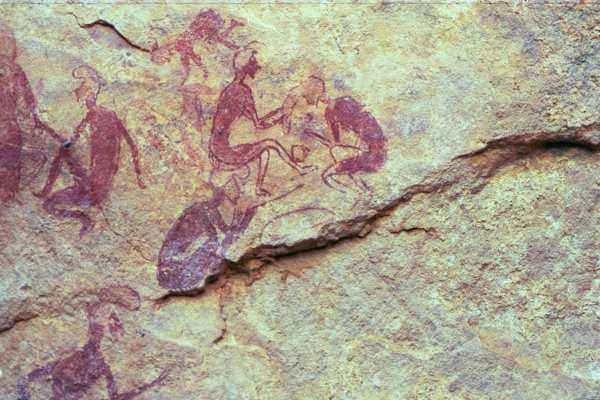 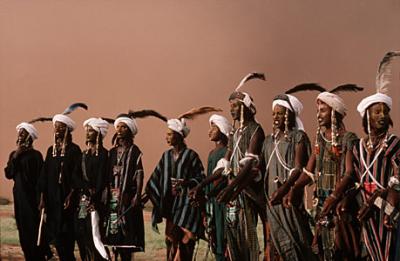 FULANI : "LIBYAN" PASTORALISTS OF THE NEOLITHIC SAHARA FULANI : "LIBYAN" PASTORALISTS OF THE NEOLITHIC SAHARAVist this site for more. |
|
|
|
Post by melanitex on Jul 12, 2016 10:28:42 GMT -5
Can anyone give an explanation on why the Ancient Libyans were depicted as White skinned with beards by the Egyptians on their walls wouldn't that be proof that non blacks were heavily present in North Africa (even if it was just westward of them) in Ancient Times? While "some" of the ancient Libyans appeared to be lighter in complexion,i'd be careful of using the term "white" and pls keep in mind that a lot of images that you saw are repos, some made the Libyans whiter than how the Kemetians painted them, even good repos does this. see here.  Ancient Libyans according to Kemetian image makers  This is what the non repos looked like.  This one by Lipsus Canon came out significantly liter and a terrible drawing.  This one while significantly better, did not actually captured the Libyans as presented by the Kemetians, comparisons is often made by some folks to be alike the Fulani   Note the similarity of dress and hair style even body tattoos    FULANI : "LIBYAN" PASTORALISTS OF THE NEOLITHIC SAHARA FULANI : "LIBYAN" PASTORALISTS OF THE NEOLITHIC SAHARAVist this site for more. Thank You for this but the Fulani in terms of their colour looks more like Egyptian in terms of skin colour the Libyan (even the darker images you posted) looks more tanned or very light brown like a ME person |
|
|
|
Post by anansi on Jul 13, 2016 8:16:08 GMT -5
How do you know what a typical so-called M.E population looked like in terms of color 3000 yrs ago,  This is a Levantine. This is a Levantine.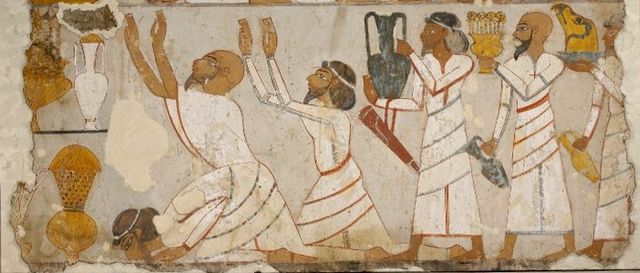 So is this. So is this. And this guy. And this guy. A levantine soldier in service to the kemitians with wife and kid probably smoking a hooka. A levantine soldier in service to the kemitians with wife and kid probably smoking a hooka.
In any case the point is mute because we know that the ancient Libyans were part of that group that migrated out of Eastern Africa to North and North West Africa. yes later in their history Eurasians during the migration of the Sea people settled among them and adopted their dress and language, but they were primarily an African people. But my point is, there were no typical M.E look either in regards to complexion or even phenotype, even today there are a small but significant very dark or black people if will with no connection to any slave trade or recent migrants that still exist in those parts. |
|
|
|
Post by clouddesignc7 on Oct 3, 2016 8:44:25 GMT -5
Ancient Local Evolution of African mtDNA Haplogroups in Tunisian Berber Populations
Frigi et al.
Human Biology (August 2010 (82:4)
Abstract
Our objective is to highlight the age of sub-Saharan gene flows in North Africa and particularly in Tunisia. Therefore we analyzed in a broad phylogeographic context sub-Saharan mtDNA haplogroups of Tunisian Berber populations considered representative of ancient settlement. More than 2,000 sequences were collected from the literature, and networks were constructed. The results show that the most ancient haplogroup is L3*, which would have been introduced to North Africa from eastern sub-Saharan populations around 20,000 years ago. Our results also point to a less ancient western sub-Saharan gene flow to Tunisia, including haplogroups L2a and L3b. This conclusion points to an ancient African gene flow to Tunisia before 20,000 years BP. These findings parallel the more recent findings of both archaeology and linguistics on the prehistory of Africa. The present work suggests that sub-Saharan contributions to North Africa have experienced several complex population processes after the occupation of the region by anatomically modern humans. Our results reveal that Berber speakers have a foundational biogeographic root in Africa and that deep African lineages have continued to evolve in supra-Saharan Africa.
|
|
|
|
Post by clouddesignc7 on Oct 5, 2016 11:21:33 GMT -5
Kemet was invaded by the Hittites, Assyrians, Persians, Greeks, Romans, Arabs, and the Mamluks.
|
|
|
|
Post by clouddesignc7 on Oct 18, 2016 15:58:49 GMT -5
There are ancient Kemetian (Ancient Egyptian) depictions of black and white Berbers / Maghrebians. Therefore, the Maghreb / North Africa outside of Egypt was mixed in ancient times, meaning it was less light than it is today, at least half blacks. So a third "Mediterranean" Eurasian looking and over a third mixed caramel complected around. There are Islamic depictions of mixed North Africans going back to the 16th to 18th Centuries infact. |
|